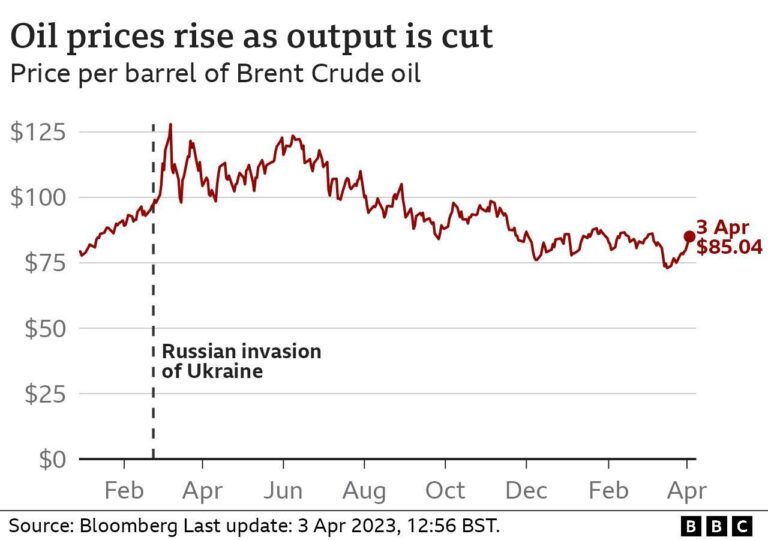Oil prices softened on Monday amid lingering uncertainty over U.S. tariff policies, as investors awaited clarity ahead of an anticipated production increase from OPEC+ members. Market participants are closely monitoring geopolitical developments and policy signals that could influence global supply dynamics, tempering crude gains despite expectations of a coordinated output boost aimed at stabilizing the market. The evolving trade landscape and strategic production decisions continue to shape oil’s near-term trajectory, reflecting the complex interplay between economic policies and energy market fundamentals.
Oil Prices Dip as US Tariff Ambiguity Clouds Market Sentiment
Crude oil prices experienced a downturn amid increasing uncertainty tied to the US tariff policy, which has left investors cautious ahead of the anticipated decision from OPEC+ to raise output levels. Market participants are weighing the impact of potential tariff shifts against the backdrop of supply adjustments, resulting in hesitant trading and subdued price momentum. The ambiguous stance from US trade officials continues to stir concerns over global demand prospects and added volatility in energy markets.
Key factors influencing the current market dynamics include:
- Pending OPEC+ agreement expected to increase production, potentially easing tight supply conditions.
- Unresolved US tariff policies on key commodities, creating unpredictability in trade flows.
- Mixed economic data from major consuming countries, complicating demand outlook.
- Broader geopolitical tensions that could disrupt or support price fluctuations.
| Crude Type | Price Change | Current Price (USD) |
|---|---|---|
| WTI | -1.2% | $72.45 |
| Brent | -1.0% | $78.30 |
OPEC Plus Production Increase Anticipated to Stabilize Supply Levels
OPEC+ member countries are poised to increase oil production in the coming months as part of a coordinated effort to balance global supply and demand. This move comes in response to recent market volatility triggered by uncertain trade policies in the United States, which have tempered investor confidence and led to price softening. Key producers within the alliance aim to alleviate supply constraints, hoping to ease upward pressure on crude prices and support economic recovery worldwide.
Market analysts highlight several factors tied to the anticipated output adjustment:
- Strategic reserve management: Ensuring adequate stockpiles to manage unforeseen disruptions.
- Geopolitical stability: Mitigating risks from regional conflicts that could impact supply chains.
- Demand forecasts: Aligning production with expected shifts in energy consumption, especially in emerging markets.
| Country | Projected Increase (barrels/day) | Current Production Level |
|---|---|---|
| Saudi Arabia | 500,000 | 10,200,000 |
| Russia | 300,000 | 9,500,000 |
| United Arab Emirates | 150,000 | 3,000,000 |
Analysts Caution on Volatility Amid Geopolitical and Trade Policy Risks
Market analysts are signaling caution as oil prices hover amid uncertainty fueled by shifting geopolitical dynamics and ongoing trade policy debates. The prospect of increased tariffs from the United States has injected a layer of unpredictability, prompting investors to reassess risk exposure ahead of a scheduled OPEC+ production adjustment. Experts underscore that while the output boost is expected to ease supply constraints, the prevailing tensions between major economies could heighten price swings in the near term.
Key factors influencing volatility include:
- Unclear US tariff implementation timelines
- Diplomatic strain between oil-exporting and importing countries
- Potential retaliatory trade measures affecting global demand
| Factor | Impact on Oil Prices | Market Response |
|---|---|---|
| US Tariff Announcements | Price suppression due to demand concerns | Volatile trading sessions |
| OPEC+ Output Increase | Supply uplift, downward price pressure | Temporary price correction |
| Geopolitical Tensions | Potential supply disruptions | Heightened price volatility |
Strategic Recommendations for Investors Navigating Oil Market Uncertainty
In light of evolving tariff uncertainties and the anticipated increase in OPEC+ oil output, investors should adopt a cautious yet opportunistic approach. Diversification remains paramount, particularly by incorporating energy sector stocks that are less vulnerable to geopolitical developments and regulatory shifts. Additionally, monitoring commodity futures and options can offer strategic entry points to leverage price volatility without excessive exposure. Staying informed through real-time data feeds and expert analyses will enhance decision-making, helping investors pivot quickly as market conditions change.
Strengthening portfolio resilience also involves evaluating alternative energy assets and indirect investments that may benefit from the transition away from fossil fuels. Consider the following strategic moves:
- Hedging against volatility via energy ETFs or commodity-linked securities.
- Assessing supply chain impacts that could influence oil prices, including geopolitical tensions and regulatory decisions.
- Balancing short-term positions with longer-term holdings to mitigate sudden shocks.
- Conducting scenario analysis that factors in varying OPEC+ production outcomes and tariff developments.
| Strategy | Risk Level | Potential Benefit |
|---|---|---|
| Energy ETFs | Medium | Broad sector exposure, risk diversification |
| Commodity Futures | High | Leverage volatility, capitalize on price swings |
| Renewable Energy Stocks | Low to Medium | Long-term growth, hedge against fossil fuel decline |
| Scenario-based Portfolio Adjustment | Variable | Proactive risk management in uncertain markets |
Future Outlook
As oil markets await clearer signals on U.S. tariff policies and the anticipated OPEC+ production increase, price volatility is expected to persist in the near term. Traders and industry observers will continue monitoring developments closely, as any shifts could significantly impact global supply dynamics and energy costs. Reuters will provide ongoing coverage as the situation evolves.




